Liz Carr for The Normal Heart – National Theatre

Actress and disability rights campaigner Liz Carr has urged theatre fans to continue to wear face coverings. After winning an Olivier award for her performance in The Normal Heart at the weekend the Silent Witness star urged venues to hold separate shows so people most at risk of Covid can attend. Carr, who has been wheelchair bound since she was a child, said she was concerned that theatres were becoming inaccessible to people who have underlying health conditions as the number of people continuing to wear masks falls, despite a new surge in Covid infections. Speaking to BBC News, she said: “Theatre should remain accessible even to those of us who have health conditions. “If I’d had a five-minute speech, I would’ve talked about how I haven’t been to the theatre in over two years. This is a frightening night for me. “Now, you could say, ‘Yeah but you did a play, Liz, in front of 1,200 people every night’. “Yes, but I was on stage with everybody who was testing, everybody in the cast tested every day, so I felt safer than being a random member of the public in an audience around people I didn’t know. “I’m not sure about [the issue of] everybody wearing face masks. Personally, I think yes they should in indoor environments because Covid-19 is airborne. “But I think theatres could think about having safer performances. I think they should have face mask performances that are more socially distanced. In the same way you might have a British Sign Language performance, I think you should have Covid-safer performances.” Some arts and entertainment venues offer accessible showings – such as subtitled cinema screenings for deaf people or autism friendly events – but it is not thought that anywhere is forcing or encouraging audiences to adopt a more cautious approach to Covid than is now required by law. “Some of my friends who weren’t ready to come and see the show, they came to see the dress rehearsal, because they didn’t feel safe enough to come,” Carr told the BBC. “So I think performances with less capacity and mandatory face masks, every show should be doing that to make sure theatre remains accessible even to those of us who have health conditions.”
Helping young drivers with Autism learn to drive

Part of the focus of World Autism Month is encouraging people to take a pledge to help create a world where all people with autism learn to drive and can reach their full potential. That’s something Young Driver feels very passionate about. Its aim is to become the UK’s most inclusive provider of driving lessons and it wants to get the message out there that it is possible for almost anyone to give learning to drive a try – even if they might not ever be able to drive on a real road. Learning to drive isn’t just about passing your test Learning to drive is about more than just learning a set of skills to pass a test. It’s about building confidence and a sense of achievement. It’s about having something in common with your peers. It’s about independence. Even if a learner knows they might not ever drive on the road, it’s important that they have the opportunity to experience what it’s like, if that’s something they’re keen to do. Young Driver offers driving lessons to youngsters aged 10 and over at private venues across the country. Because lessons take place on private property the scheme is suitable for anyone who either isn’t allowed or doesn’t feel able to have lessons on the road, whatever their age. Pupils could have additional needs, may never be able to drive on the roads or may want to build up their confidence first. Lessons take place in real, dual controlled cars, with a fully qualified instructor, so it’s perfectly safe and controlled – but otherwise very much as it would be at 17 learning to drive on the road. Automatic and specially adapted cars are available if needed. More than 10,000 lessons delivered to youngsters with autism The scheme estimates it has delivered well over 10,000 driving lessons to young people and adults with autism, as well as welcoming anyone with additional needs. One in 100 people are on the autism spectrum and there are thought to be around 700,000 autistic adults and children in the UK. Learning to drive is a skill that some people with autism may excel at, as it involves clear processes and rules. But every individual is different and for some there may be an element of nervousness which means they are hesitant to give it a go – which is where Young Driver steps in. Sue Waterfield, head of marketing at Young Driver, said: “We have many pupils with autism, aged 10 and upwards, who come to us and parents usually inform us so our instructors can adapt lessons accordingly, if needed. One of the great things about Young Driver is that because it’s held on private property the rules of the road don’t apply in the same way. So, it’s possible for people who are very nervous or unsure if they’ll take to it, or who may even know they would never be able to drive on the road, to come and give it a go. “As an example, we have taught blind people before, who wanted to experience what it was like behind the wheel, although obviously they could never drive on the roads. We have several regional autism groups who regularly plan trips for their members, as well as families who come back month after month. The lessons remove that pressure of having to try controlling a vehicle in real traffic – everything can be done at a speed (literally and figuratively) that suits the learner. It’s a very safe and calm way to give driving a go and it can be a brilliant confidence boost for someone to experience that thrill of being in control of a vehicle.” Driving dreams come true for George Some pupils might believe they’ll never be able to drive on the roads – but sometimes a bit of practice can change that. George Stooks, age 23 and from the New Forest, passed his driving test last year – however, with a diagnosis of severe autism no one was sure he’d ever be able to drive a car. When he was just two years old, George’s mum Jane was told he would never talk, never function in society and that he would be better off in care. Thanks to Jane’s dedication and a visit to the US to study a home-based therapy, George went to primary school at the age of nine, gained GCSEs, a BTEC in Childcare and has worked as a coach in kids’ camps. George started his lessons with Young Driver at age 19. As no one was sure if he would take to driving, the scheme provided a safe way for him to test the waters. He began having lessons with an experienced instructor in an automatic vehicle at Young Driver’s Southampton venue. Despite some initial nerves, he recently passed his driving test on his first attempt with zero minors, giving him much-needed independence. George’s mum Jane runs a charity for adults with disabilities to enable them to socialise and reach their full potential, called Positive Path Foundation. She comments: “When he was young, we weren’t sure what George’s future held for him, but he has continued to amaze everyone by breaking barriers. Were it not for Young Driver we may never have attempted to even try George behind the wheel. When I initially saw the scheme I discounted it because George was over 17 at the time – but I then realised it was suitable for anyone who wants to try their hand at driving. I believe 85 is the oldest pupil ‘Young’ Driver has had! His instructor understood George from very early on, building a rapport. He even helped us get George’s provisional licence – and it was a big help to be able to continue to use the same instructor when he then switched to lessons on the road. Being able to drive means George has some independence, it’s so important. I have already recommended it to lots of
The benefits of workplace coaching for diverse-thinkers
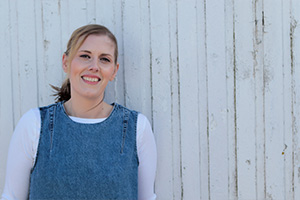
Claire Brown is a qualified Life, Career & Executive Coach and supports professionals to do work they love. Claire is passionate about enabling others to find meaning and fulfilment in their professional lives. Here she talks to Ucan2 on the benefits of workplace coaching for diverse-thinkers. The prevalence of neurodiversity / autism When we spend over a third of our lives working, it’s really important that we get to do work that matters to us. Everyone deserves the opportunity to do work that they love and to bring the very best of themselves to the workplace. With an estimated 15-20% of the population experiencing some form of neurodiversity, it’s important that employers are equipped to provide the individual support their employees need for the benefit of everyone. Autism is a lifelong developmental disability and affects approximately 2% of the world’s adult population. It affects how people communicate and interact with the world. Those with autism often experience heightened senses, causing things, very easily, to become overwhelming. Common traits associated with autism include difficulties with social interaction, having an unusual interest in objects, a need for consistency, unexpected emotional reactions and expressions, under/over reaction to one or more of the senses and fluctuations in energy from day to day. What is workplace coaching? Workplace coaching offers huge benefits for neurodivergent team members and their employers. These facilitated conversations are a highly effective way of finding practical solutions to challenges experienced in the workplace by identifying individual strategies that can be implemented with the support of Line Managers, HR Professionals and Colleagues in the form of reasonable adjustments. It doesn’t just benefit the employee as it provides a safe space in which honest and open conversations can be had that enable the employer to better understand their colleagues’ needs and the practical ways in which they can harness and play to their strengths, which benefits the whole organisation. The benefits for employees By gaining a better understanding of their own needs and how they can bring their best to their work, employees can set themselves up for success. They are more enabled to practice effective state management and limit the negative impacts of stress and anxiety upon their performance. In addition, they can feel more fulfilled in their work, gain a greater sense of achievement and are enabled to unlock their potential. Diverse-thinkers can have a greater awareness of their strengths and harness these which, in turn, leads to improved performance and productivity. The benefits for employers Neurodiverse conditions including Autism are classed as Disabilities under the Equality Act 2010. Therefore, as an Employer, you may be required to put in place reasonable adjustments to provide the necessary support. In addition, neuro minorities often have particular strengths that can be of real benefit to your organisation. These can include seeing the big picture, thinking outside the box, connecting ideas, 3D thinking, creativity and innovation. Employees who feel better understood and supported are more likely to stay in their role for the longer-term, so additional benefits to the company include job sustainability and retention. Coaching can also help to raise awareness around neurodiversity issues within the workplace and improve communication across the organisation. This, in turn, helps to address absenteeism, improves line management people skills and increases productivity. Celebrating neurodiversity Employers have the opportunity to play a key role in celebrating neurodiversity and encouraging a really positive narrative within their organisation by recognising the numerous strengths that neurodivergent individuals bring and the benefits brought to the company by adopting a more creative and innovative approach. Organisations such as Genius Within CIC are experts in this field and can provide the relevant advice and support if you’d like to find out more. You can find out more about Claire and how she can help here.
How create a safe space in your home for children with autism

Family-owned footwear retailer Charles Clinkard have worked closely with local charity, Daisy Chain, to make their stores into more comfortable spaces for families who are affected by autism. In this article, Rachel Clinkard shares a few ways we can do the same in our homes and help children with autism. Parents of a child or children with autism will no doubt already be aware of what their little ones need to stay soothed, stimulated, and safe. But if you’re welcoming children on the autistic spectrum into your home, perhaps for the first time, you might be wondering what you can do to make them feel more comfortable. Children with autism often experience the world differently to how we might be used to, and while it’s easy to make adjustments to your home to help them feel at ease, where do you start? Below, I’ll take you through just a few things you can do to help turn your home into a safe space for autistic children. What to include Start by putting together a designated play area in your home. Providing sensory toys with a range of textures can provide intrigue without immediately overwhelming children with autism, and they can enjoy touching and feeling these safe objects rather than seeking out other items from around the home (Autism Speaks). If you have room to set up a large activity then a water play area or indoor garden would be ideal — as would setting up a soft play area, a ball pit, or an indoor trampoline. Smaller-scale sensory play can include playing with putty or slime, building blocks, and fidgets such as spinners or poppers. A dark yet comfortable plush area to curl up in, perhaps with a book or digital device, can be helpful for when a child feels overstimulated or just wants to relax for a while. A tent or play house can provide privacy, and soft toys, blankets, and pillows can all help absorb sounds and muffle noises that can be overwhelming, such as echoes, footsteps, and even voices. If you have wooden or laminate flooring, rugs can help with this too. Calming colours and décor When we think of child-friendly décor, we often imagine bright, colourful areas with lots of stimulating primary shades. However, people with autism often view colour with greater intensity than people without, so decorating this way can often lead to overstimulation (ResearchGate). Instead, consider choosing calming, muted tones like neutrals or pastels, or opting for a monochromatic look. Similarly, matte surfaces are better than shiny, polished finishes. Lighting can go a long way towards creating the right atmosphere in your home, and for children on the autistic spectrum, it’s better to stick to light sources that are as close to natural light as possible. Low-level, warm lighting is best for creating a calming atmosphere, but not too dim — very low lighting can lead to accidents such as tripping over. Flickering sources such as fluorescent lights can be very distressing so stick to LEDs where you can, and while it may not be immediately obvious to you, the sound a light source makes can become a problem too. So, keep an ear out for any buzzing or hissing lights around your home. Making the space safe Most children with autism explore with touch, which includes picking up and interacting with unfamiliar items. To prevent children from playing with things that they shouldn’t, it’s important to keep your countertops tidy and clutter free, with plenty of hidden storage such as cupboards and cabinets rather than open shelving. Not only will this keep potentially dangerous objects out of harm’s way, but as mess can sometimes be visually distressing to autistic children, a clear countertop may be more soothing too. Other ways children with autism can be more prone to hazards include their balance and motor skills, their spatial awareness, and their general perception of danger and reaction to pain. With this in mind, other ways to make your home safe include padding sharp corners and edges, covering plug sockets, and using doors and gates to seal off parts of your home. These steps may sound familiar as they are similar to babyproofing, but they can help ensure the safety of children of all ages. Every child is different, but autism can provide extra challenges when it comes to making a kid-friendly space in your home. These tips can help you assess your home and work out what you need to do to create a comfortable, safe, and stimulating environment for kids on the autistic spectrum.
Living with epilepsy: breaking down social barriers

Epilepsy is the most common neurological condition, after strokes, with around 600,000 people across the UK affected. People with epilepsy learn to manage daily life with the condition in different ways, and when Gulnara Leslie was diagnosed in her late 20s, she was worried life as she knew it would never be the same. In 2008, care-worker Gulnara was pregnant with her first child and started to find small droplets of blood on her pillow. Initially ignoring the bleeds, it wasn’t until Gulnara’s husband, Ian, found her having a seizure at home that she was admitted to Aberdeen Royal Infirmary. At the age of 27, Gulnara was diagnosed with epilepsy. Nurturing her new born baby, she was left worried about the impact this would have on the level of care she would be able to provide and also her interaction with the wider world. Over the next few years, unfortunately, Gulnara’s epilepsy worsened with the seizures becoming more severe and leaving her unable to speak. For a number of years, afraid of having a seizure in public, Gulnara locked herself away from the outside world and managed the condition with help from her husband and local health team. She said: “Looking back to that time, it was a very dark place where I had very little interaction with friends or my wider community. I didn’t return to work for many years, so it left me feeling completely detached from real life and instead trapped in a bubble of my own home, getting to a stage where I was afraid to leave the house at all. “Before my diagnosis, I had been an outgoing and social person. It was as if a switch had been flicked and I no longer wanted to socialise or meet new people. I felt safer in the comfort of my own home in case I had a seizure. Caring for a small child is also difficult without the added stress of coping with a new-found illness, so it was a very isolating position to be in and I didn’t know who I could turn to for support.” It wasn’t until Gulnara was introduced to her local Epilepsy Outreach Worker through Scottish health and social-care charity Quarriers, that she started to gain confidence. This dedicated service provides support to people across the north-east of Scotland who are living with epilepsy as well as those who support them. Gulnara said: “Before meeting with my dedicated support worker, Lorraine, I was nervous. I hadn’t confidently left home for years and this seemed like a big step to take, but I knew I couldn’t continue living how I was – for the sake of myself or my family. “As clichéd as it sounds, as soon as I met with Lorraine, my life changed. Instantly I felt like I had a connection with someone who understood my day-to-day challenges and could provide individualised support.” Now age 40, Gulnara continues to meet with Epilepsy Outreach Service users on a weekly basis, participating in a range of social activities across the north-east of Scotland which has dramatically improved her social skills and helped her to regain confidence. Gulnara said: “I’d encourage anyone who’s feeling isolated to find out what support groups are available in their local area. My diagnosis left me feeling lonely and trapped for too long, but the work of Quarriers opened up a new community of people who understood the barriers I faced and helped me realise that there is no need to shy away from life whilst living with epilepsy.” Quarriers also operates Scotland’s only residential assessment and treatment centre in Scotland for adults – The William Quarrier Scottish Epilepsy Centre. The independent hospital provides unique epilepsy services to patients and clinicians and has supported hundreds of people across Scotland and beyond living with epilepsy since it was established in 2013. For more information about the Centre, visit: https://www.quarriers.org.uk/epilepsy/
Adam Stanton-Wharmby takes on another wheel power challenge for Whizz-Kidz
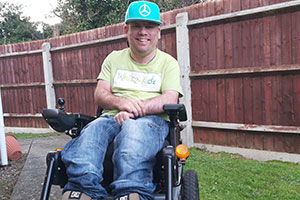
1.9% of the UK population uses a wheelchair according to the 2011 census. It is estimated by the National Prosthetic and Wheelchair Services that this would equate to 750,000 people. I am one of those people who uses a powered wheelchair, and since 2017 I’ve been raising money for charities by completing a series of wheelchair marathon challenges (wheel power challenge) where I have driven my wheelchair from city to city. I have raised money for Remap, a charity that created a battery system that would allow me to switch between two batteries and increase the life of my wheelchair. I am now raising money for Whizz-Kid, who work tirelessly to transform the lives of wheelchair users across the UK, supporting them to become confident and independent young adults. I have volunteered for them as a wheelchair skills trainer, supporting the ambassador clubs and Whizz-Kidz camps. During the pandemic, my wheel power challenges were postponed, but now I am ready for my next marathon currently planned for March 2023: Lands’ End to John O’Groats (#JOGLE). My total trip should be completed in approximately 22 days, beating the current world record set by Mary Laver who completed this route in 2009 in 24 days. For this specific challenge, I have had my chair upgraded by some very special engineers. During my last challenge from Cheltenham to Silverstone, a Formula One charity, Grid4Good got in touch with the Mercedes Formula One Team who then offered to modify/upgrade my powered wheelchair to help me to complete my next route. This is the first-ever wheelchair to be worked on in this way by a Formula One Team. You can read an article about it here. Find out more on my JustGiving page.
EAST DEVON’S SEATON TRAMWAY WINS TWICE AT DEVON TOURISM AWARDS
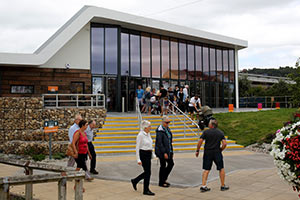
The Heritage attraction in East Devon, Seaton Tramway wins SILVER for Accessible and inclusive Tourism Awards & SILVER for Large Visitor Attractions of the Year, at the Devon Tourism Awards presentation which celebrated excellence across the industry. The Tramway team learnt of their success via a Zoom presentation during the awards ceremony on 10th March alongside other competing attractions and businesses around Devon, whilst in the midst of ‘Disability in the Workplace’ training on site. The Tramway has developed and expanded its offer greatly over the past few years, investing in new infrastructure, staff training and new events and experiences focused towards being inclusive and accessible. With its trams being wheelchair accessible as early as 1988, accessibility has been a large part of the East Devon’s Charity’s ethos. That attitude has continued through with new halts and infrastructure being created with accessibility in mind. The heritage attraction has also trained staff for Mental Health, Disability, Dementia and Deaf Awareness and in 2021 became a Disability Confident Employer. The Tramway is also part of the Nationally recognises Sunflower Campaign. As all businesses experienced throughout the pandemic, Seaton Tramway had to face major changes in the way it operates but rose to the challenge to see one its best years by the end of 2021. The 3-mile route which has been home to the Tramway since 1970, will see two new stops added to the journey in 2022. Allowing access to its Riverside Halt and access to over 4km of walking trails via its new Seaton Wetlands Halt where passengers will be able to board and alight to the neighbouring Nature Reserves. “After being in business for over 50 years, it is good to know we continue to move forward on the right tracks and be recognised for the hard work we all do as a team at Seaton Tramway. It’s important to us that we join our friends and businesses around Devon to be able to lead the way. From winning the Welcome Accolade for Customer Service to these Devon Awards, it truly shows the hard work from everyone who works for Seaton Tramway” commented Marketing Manager, Josh Castree. Trams depart every 20 minutes daily between Seaton and Colyton, with open top double deckers to enclosed Saloons there is a way to travel the beautiful Axe Valley, whatever the weather! Visit tram.co.uk to book your day out
Learn sign language with Tyrese Dibba in animated form!
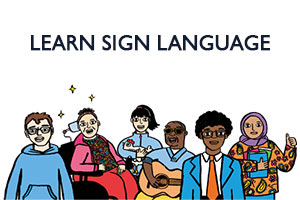
A Deaf teen who inspired over 80 thousand people to start learning British Sign Language during the UK’s first lockdown, has become the animated star of a new product aimed at raising money for charity and getting more people using BSL. Tyrese Dibba, from Birmingham, made the headlines in 2020, then aged 15, when he teamed up with the disability charity Sense, to launch free online BSnclasses to the public during the UK’s first lockdown. Deaf and partially sighted, Tyrese plays the role of ‘Mr Tyrese’ when he is giving his lessons, dressed in braces and orange tie. He would go on to be awarded the ‘Stephen Sutton Inspiration Award’ at the Pride of Birmingham Awards 2021, as well as the Prime Minister’s Points of Light Award, in recognition of his efforts. Tyrese, who is supported by Sense, now features as ‘Mr Tyrese’ in animated form, the star of ‘Sense Sign School’, a new monthly subscription product, by Sense, that aims to teach people of all ages basic British Sign Language in a fun way. Subscribers receive a monthly lesson pack in the post, which includes illustrated flash cards, a conversation guide leaflet as well as access to digital lesson pages and sign animations to aid learning. Tyrese Dibba said: “I love the idea of continuing my work in animated form, supporting more people to learn to BSL. Deaf people shouldn’t be excluded. You should be able to chat to everyone, regardless of disability.” Mr Tyrese is the Head Teacher of Sense Sign School, and is joined by other teachers, all based on real people that Sense supports – giving each pack its own unique personality and identity – and helping subscribers to learn more about the experiences of people living with complex disabilities. One of the new teachers is 18-year-old George Cook, from Birmingham. George has CHARGE syndrome, is autistic and deaf. He has been supported by Sense for over five years and uses BSL to communicate. George’s mother, Emma, says proud of her son. Emma Cook said: “I’m very proud that George is involved in this, as the more people who can sign the better. Deaf people shouldn’t be isolated in this day and age.” George said: “More people using BSL gives me more independence, because the more people who can help me, the better.” Sense Chief Executive, Richard Kramer, said: “We’re thrilled to have Tyrese and George – and other friends of Sense – support us on this exciting venture which will get more people using BSL, and help raise money for our work supporting people living with complex disabilities. Hundreds of thousands of people who are Deaf use BSL as their first language, and if more people are able to use it, we can ensure that fewer people are excluded.” You can sign up to Sense Sign School at: www.sense.org.uk/sensesignschool
Staying Safe Online for Children & Young People With Extra Difficulties
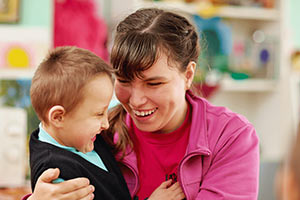
At Seashell Trust, we want to support our students to access technology. Technology and the online experience can bring so many positive aspects to their lives, but can also, unfortunately, be a source of risk and negativity. Rather than causing children and young people with disabilities to be scared of the internet, we instead focus on supporting them to understand how to use it safely and effectively. For those who work with or support children and young people with disabilities and/or additional needs, it’s important to understand how best to safeguard their online experience. The first step is recognising that these individuals are often more vulnerable online. For example, they may have additional communicative needs, meaning they could be unaware of the signs of online abuse, or be unsure how to report any difficulties encountered online. E-Safety: Technology, Time, Take Care, Tricky, Tell At Seashell, when any of our lessons are computer based we implement the use of the 5 E-Safe Ts. They are spoken through at the start of the lesson and embedded throughout to ensure that students feel comfortable with each one. Technology – We list all the different types of technology the students use. This would include iPads, iPods, Tablets, computers, phones and games consoles. Time – Take your time using technology. Think about what you are doing. Take care – Take care online. Think about what is right and wrong. Tricky – If something doesn’t feel right, turn the device off or walk away from the device you are using. Tell – Tell a member of staff or someone you trust that you have seen or accessed something that you do not like or makes you uncomfortable. Support Networks for Online Safeguarding When caring for and supporting children and young people with extra difficulties, it’s vital to have a well-informed team that are working towards the same goals and communicating effectively. This is especially important when it comes to safeguarding online. Seashell’s teachers and other health professionals work closely with our IT and Safeguarding Teams to maintain a valuable support network for our students. We monitor what the students are accessing, and will intervene and explain where necessary. It’s important to recognise that each child and young person has different needs and experiences, and will naturally require varying degrees of help and methods of online safeguarding and support. If we feel that a student still does not understand how to stay safe online or needs extra assistance for any reason, teachers, support staff and specially trained speech and language therapists will create an individual resource for the student called a ‘social story’. A social story is a brief, simple story designed to teach children about social situations and appropriate responses. Seashell is a charity dedicated to providing a creative, happy and secure environment for children and young people with complex needs, delivering individually tailored support services that promote independence and build confidence through programmes of education offered through our school and college. Comment provided by Seashell Trust.